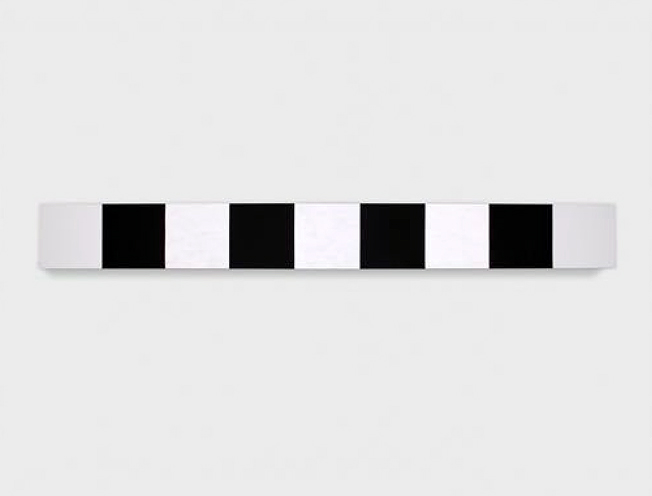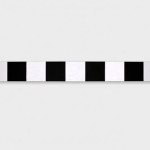White Black 9 Bands Beveled
2010
Glass Microspheres in Acrylic on canvas
12 x 108 inches ( 30.5 x 274.3 cm)
Ex-collection
The Artist
Ace Gallery
Private collection until the present
Not unlike her scintillating paintings, Mary Corse has flickered in and out of visibility during the past five decades. While her early association with the California Light and Space movement brought her significant acclaim, many younger viewers are experiencing her works for the first time, largely due to the widespread and renewed interest in the Los Angeles art scene of the 1960s. After creating in 1968 a series of works that encased fluorescent bulbs in Plexiglas boxes, Corse discovered glass microspheres, the tiny reflective beads that are commonly used to brighten highway signage. Corse has long combined these microspheres with white acrylic paint, carefully brushing the mixtures on canvases before sanding certain areas to a pristine finish. Emphatic grids tend to govern Corse’s works, White Black 9 Bands Beveled is subdivided into wide vertical bands that gain and shed luminosity a mysterious effect that seems to derive from variable brushstrokes and microsphere densities. When the work is viewed from a raking perspective, one also notices the horizontal brushstrokes that cover the ground and provide a gestural counterpoint to the painting’s geometric rigor. “They don’t reflect light, they prism,” Corse says. “It makes a triangle between the surface, the viewer and light. So if the viewer moves, then it changes.” “I like work that takes you beyond,” Corse says “Thinking is great in its place. … But my work resists the technological in a way. It resists thought. Thinking is finite. Thinking is in the past. I like work that takes you into the infinite.”


 White Black 9 Bands Beveled
White Black 9 Bands Beveled